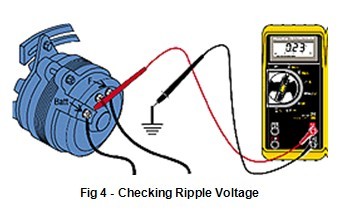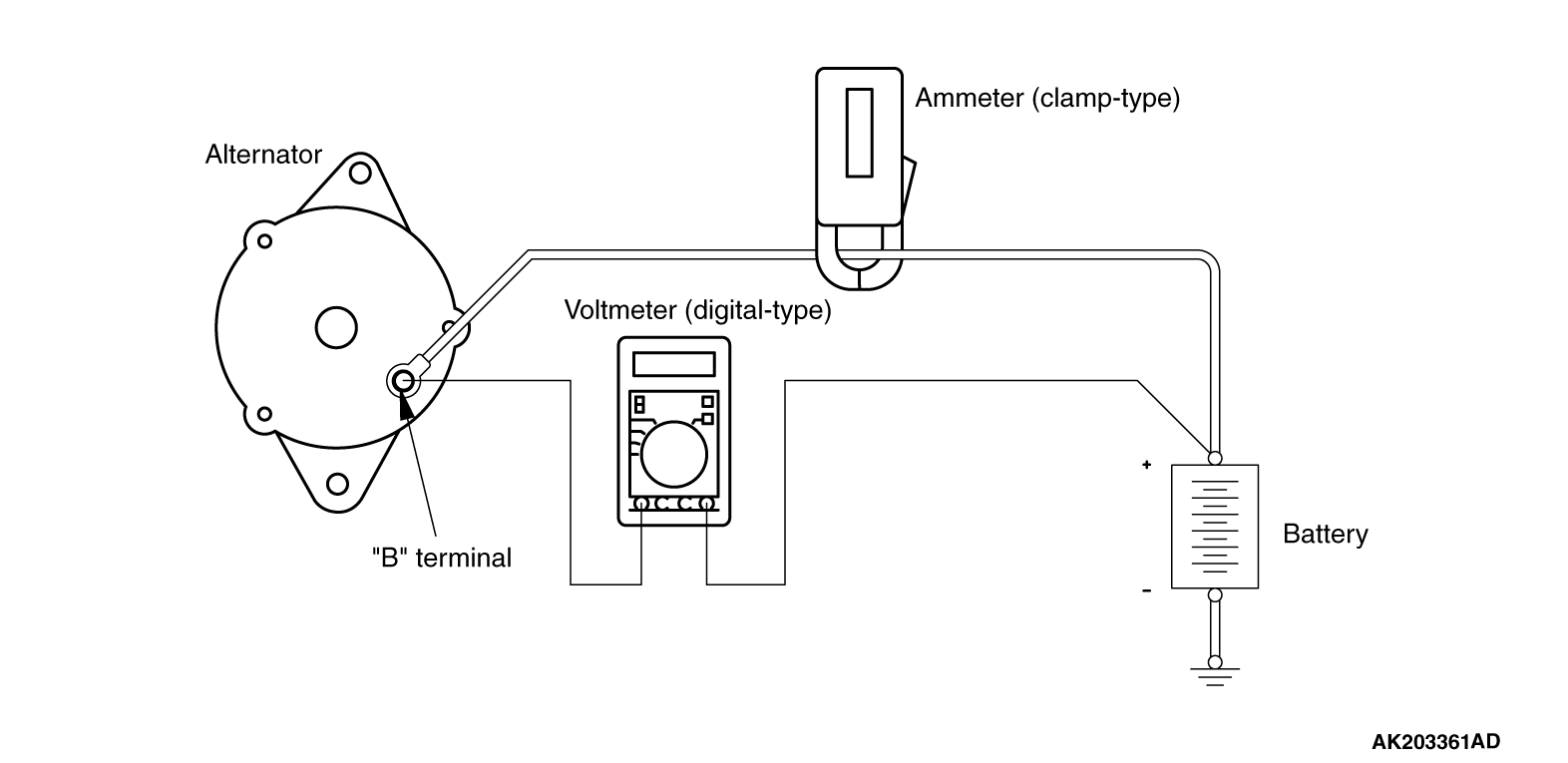
Locate the battery which is under the hood in most cases but some cars have them under the back seat or in the trunk. You should read 000 in the display.

Listen to the alternator while the engine is running.
How to check alternator output. Monitoring Your Alternator 1. Check the alternator gauge. If you have a voltamp gauge it will read the alternator output for you.
Listen to the alternator while the engine is running. If there is a problem with the bearings you may hear a. Turn the radio on and rev the engine.
How to check the alternator voltage output step by step procedure. Open the hood bonnet. Find the battery location.
Battery location varies from car to car model. Its mostly located in the engine bay but. Open the battery casing-holder.
Set the voltage reading on the. How to Check Alternator Amp Output Step 1. Check the amperes your alternator produces if it operates correctly.
Look in your cars manual and go to the. Wear protective gloves as you need to be in close contact to the car battery to check the ampere output from. Open the cars.
To check for a bad alternator diode you may want to reset your voltmeter to the lowest possible AC voltage scale setting. Have your assistant start the cars engine and let it run for a few minutes at 1200 RPM. Connect the voltmeter probes on their respective battery terminals.
You should read 000 in the display. That is the output of the alternator at the battery and that range is needed to keep the battery properly-maintained. If the voltage is significantly lower than that then there could be an issue with the alternator but there could also be an issue with your belts or pulleys or wiring.
The easiest way to test an alternatoris to check the output voltage and a lot of instrument clusters even include built-in voltmeters. Other vehicles sometimes have handy warning lights on the dash that turn on whenever the output voltage of the alternator drops below a certain level. Conduct a Voltmeter Test.
Get a cheap voltmeter. With the engine off battery voltage should be between 125 and 128 volts. If its below that charge the battery with a battery charger before you conduct the test again.
Then start the engine and check for increased voltage readings. If you see higher readings chances are the alternator is good. I will show you how to test an alternator the right way for voltage and amperage without using expensive amp meters.
We will make a homeade shunt amp clamp. TESTING ALTERNATOR AMP OUTPUT WITH MULTMETER Examine the AMPs the alternator generates if it works perfectly. Then examine the specification are of your vehicles manual where you will see alternators details.
This will inform you about the maximumminimum AMP of your alternator. Switch your voltmeter onto the V position of DC current testing which is shown by a straight line with a broken line. Locate the battery which is under the hood in most cases but some cars have them under the back seat or in the trunk.
Identify both the negative black and. Although alternator manufacturers rebuilders and suppliers typically refer to the rated output in promotional materials both the ISO and the SAE require a format of IL IRA VTV where IL is the low or idle amperage output IR is the rated amperage output and VT is the test voltage. Checking alternator output using an ammeter in series with the charging system should be done only by an auto-electrician.
A safe test can be made with an induction ammeter held parallel to the output cable but it is less reliable. Checking the alternator output leads Check that all connections are secure. Any easy way to test the output in amps of the alternator The best way to have it tested is to take it to a shop that can measure its output there is a testing setup made for this that puts a load on the Alt.
And can measure it. The following are concrete tips and steps on how to test a car alternator using a voltmeter. Buy or get a voltmeter at the local electronics store.
Choose the DC option on the voltmeter as opposed to the AC. This is because the battery uses DC and that is what you will be testing. This test is a simple procedure to check alternator voltage regulator output.
You need a digital multimeter for this test. Set the parking brake and shift the transmission to Neutral manual or Park automatic. Set your multimeter to DC Voltage and select the 20 Volts in the scale.
A loose drive belt can cause an alternator to not charge properly so its tightness is the first thing to check. Locate the engines drive or serpentine belt. Check its tightness by pressing on it between any two pulleys.
It shouldnt have much movement or feel loose.